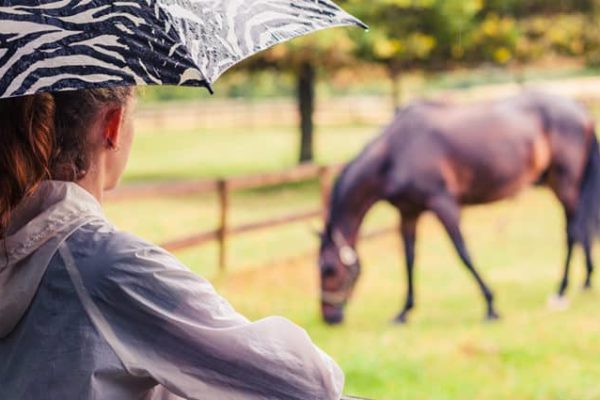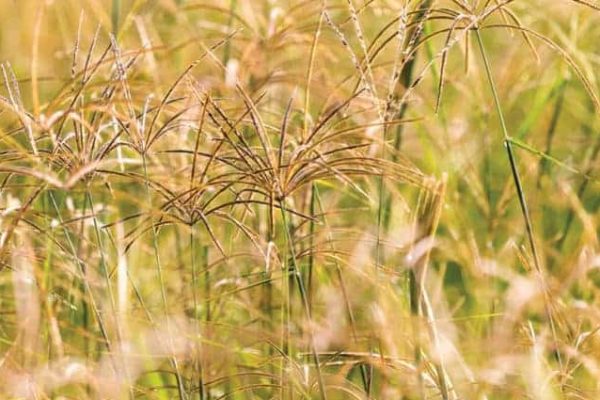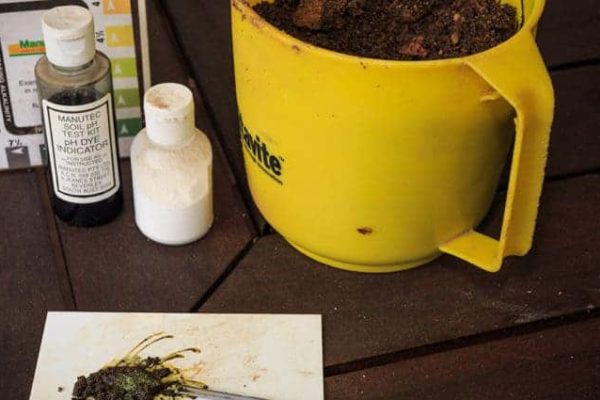Posted by Campbell Wilson (reposted from www.permaculturenews.org)
When you are trying to decide which method of soil improvement to take, sometimes it seems like there are as many different approaches as there are bacteria in a teaspoon of healthy soil.
This isn’t necessarily a huge problem when you’re talking about a suburban backyard scale. It’s easy in that situation to: do some aerating with a broad fork; balance the Calcium:Magnesium ratio and whatever trace minerals your soil test says are missing; build and add compost and worm castings; brew up some compost tea; add some seaweed extract, a handful of basalt rock dust, a bit of Charlie carp and the humified eyeballs of some rare mountain lion to top it off.
But what about the farmer who is planting 1000 Ha of Wheat and Rye so the armchair permaculturalists of this world can munch their organic sourdough toast while checking the next important forum posting written by someone else sitting at a computer at 10.30am. That farmer would quickly go broke if they did all the things a backyard gardener can do. So how to decide?
The farmer’s goal should be to turn subsoil into topsoil. That is, to be able to walk anywhere on his or her land, sink a post-hole shovel and find something resembling chocolate cake. If you’ve got chocolate cake, you’ve got good crops, whether it’s pasture, grain, fruit or veg. Soil scientists still say it’s impossible but I’ve seen it happen under the care of a number of our country’s best farmers (Col Seis and Ron Smith to name a couple) to know that it’s very achievable (and we’re talking years, not centuries, as you may have been led to believe).
What’s the secret? It’s plants and microbes working together.
It seems that Nature got sick of applying bags of NPK to all the different plants on Earth and equally sick of spraying out molasses and fish hydrolysate to feed the bacteria and fungi in the soil and decided to read Mollison’s Intro to Permaculture. Principle 1: Relative Location made a bit of sense, so I conducted a Needs, Functions & Products Analysis, and in doing so recognised that plants produced more than enough sugars through photosynthesis, but needed nutrients to do so, and meanwhile bacteria and fungi were easily the most efficient critters on earth at grabbing hold of nutrient, but had a hard time finding carbs to fuel their bodies. It was a match made in heaven. The plants were put next to the microbes and have been symbiotically trading root exudates (sugars) for nutrients ever since.
What does this have to do with building soil? Those sugars passing from the plant to the soil critters are liquid carbon. Let’s take one of the exudate recipients, mycorrhyzal fungi, as an example (they attach themselves to plant roots in a symbiotic relationship). They use these sugars to produce glomalin, a protective coating for their hyphae, which is sloughed off into the soil when the hyphae dies. The glomalin is a very persistent carbon compound that ‘sticks around’ in the soil for a long time (it’s one of the main things that holds soil aggregates together).
What encourages hyphae production? You need to feed them for as much of the year as you can, and this is only possible when a plant is actively photosynthesising. That is: maximise root exudates by maximising yearly photosynthesis.
This means:
- In pasture, an appropriate disturbance/recovery regime to maximise the growth potential of pasture plants. (See Holistic Grazing Management for further info.)
- Different plants thrive at different times of year. A mix of C3 (cool season) and C4 (heat tolerant) plants will ensure you can take advantage of moisture and have something green and growing throughout the year (See Carbon Grazing by Allan Lauder for more info on this topic)
- Winter cropping C3 plants (ie. wheat, oats, rye) into dormant C4 perennial pastures or summer cropping (millet, sorghum, corn) into dormant C3 pasture (search for Pasture Cropping, Col Seis)
- A winter active groundcover under dormant fruit trees.
Using a combination of time-controlled grazing and pasture cropping, Col Seis has managed to go from the soil shown on the right of the image at top (this sample is from over the fence, 15m into his brother’s conventional agricultural paddock, who still farms the way Col used to) to the soil on the left in 15 years. (He could do it in 10 now he reckons.)
In doing so, his soil test in relation to what existed before is:

So let’s consider the management interventions related to the chemical, biological and physical aspects of Col’s soil that have lead to these results.
Chemical
The changes seen in the table above to the chemical nature of Col’s soil have been achieved without the addition of single bag of super-phosphate, nor a tonne of lime, nor any trace minerals, nor any sizable amount of compost, in 30 years. (He does continue to put out a small amount of DAP when sowing a grain crop, but has had good success with worm juice this year.) Soil nutrient amendments haven’t been the driver.
Biological
Col did put compost teas out for a little while, but then thought, “What the hell am I doing this for? Why am I adding foreign microbes from a compost pile when there is already a huge diversity suited to the conditions in the existing topsoil”. He then changed to feeding the existing microbes with molasses and fish emulsion, until he once again thought, “What the hell am I doing this for? Why am I putting food out when the plants create the best microbial food there is”. Biological stimulants haven’t been the driver.
Physical
A small aerating affect is achieved with the tines on the direct seeder that Col uses for pasture cropping, but they only impact down to about 70mm which doesn’t explain the dramatic increase in carbon down to 500mm. Soil cultivation hasn’t been the driver.
All this has been driven by the plants within Col’s pasture and cropping system. Here’s a brief summary of what they’ve done:
Biological
- As stated above, Col aims to maximise the photosynthesis potential on his property, and hence maximises root exudates; the fuel for the life in the soil. (Winter cereals such as oats are one of the highest producers of root exudates and really give the native pasture and soil a kick.)
- The pulse of disturbance created by time-controlled grazing, followed by a period of rest until plants have fully recovered (that is, the perennials have replaced root energy reserves) offers plenty more food to the soil food web in the form of root exudates, decaying root systems, litter, manure and urine.
Chemical
- Soil microbes fuelled by root exudates, in particular mycorrhyzal fungi, are able to access nutrients from the subsoil that were previously tied up in a plant unavailable form. They can then transport these nutrients through their network of hyphae.
- The test results above, which were taken down to 500mm, show not only an increase in Col’s Available nutrients, but Total nutrients have also increased significantly, suggesting the breakdown of parent rock material by the soil life.
- Increased carbon levels also result in a huge increase in the water and nutrient holding capacity of the soil.
Physical
The growing soil carbon levels fuelled by root exudates, along with the carbon pathways created by decaying root systems, as well as the improved structure provided by bacteria glueing their butts to the particles, the fungi wrapping themselves around everyone else and the worms and other larger critters creating tunnels through the soil as they relentlessly munch-on, all help to improve the aeration, root penetration, nutrient holding capacity, nutrient availability, water infiltration and retention etc.
So does that mean that the soil improvement methods handed to us by the various soil legends that have come before (ie. P.A. Yeomans who was physical-centric, William Albrecht who was chemical-centric or Elaine Ingham who is biological-centric) are unnecessary?
Not at all.
With the right management practices, plants can do the job, but the methods that folk such as these gave to us can help to speed things along. The key thought when you are deciding which one(s) you want to spend your money on, is to keep in mind what the goal is: for plants to maximise photosynthesis and drive the system.
Therefore the practice that you choose should address the major limiting factor that restricts photosynthesis. For example:
Physical: On an area of pasture that we are developing at the moment, compaction from past practices is the major limiting factor. It’s preventing decent root penetration as well as resulting in water sheeting off. So, in conjunction with time-controlled grazing, we are implementing an initial program with a Keyline Plow using Keyline Pattern Cultivation. Good grazing and pasture cropping once every 3-4 years should maintain it from there.
Chemical: On the property of a friend of mine, he has a heavy sodic layer down about 170mm which is inhibiting root penetration. In this case, he has had an expert in the Albrecht method of soil balancing give him some advice. He has been injecting liquid calcium down to the sodic layer, which has changed the structure of the soil and resulted in root penetration a further 30-40cm in 2 years. The plants can now start to drive the system.
Biological: As far as adding biology goes, tests have recently been done by a leading University on a number of different compost teas and microbial jungle juices. Basically the results showed that if you had a bit of decent topsoil already, the compost tea made no difference. If your soil is dead, for example it might have been plowed non stop for 100 years, or perhaps there’s been excessive chemicals used on the land, then it could be worth putting some critters on as an initial inoculation.
This is just my opinion, but rather than adding foreign microbes from a bottle or even a thermophilic compost pile (which is an incredibly different environment to field conditions if you think about it), why not get hold of some soil from under a few of the best pastures in your region. Perhaps grab some from under a healthy bit of native grassland that you know of too. In my opinion they could well be better suited to your conditions.
Here’s a good story related to this topic. John Weatherstone is an inspirational farmer who has planted many thousands of trees to compliment his grazing enterprise. He had a stand of Casuarinas that were yellow and weren’t doing well. John W had a long discussion with John Field from the Australian National University about whether it could be the clay or the salt below or etc. In the end John F said, why don’t you go and grab some duff (leaf litter and topsoil) from under a healthy old stand of Casuarinas and put it around their base. John W did this to half of them and they turned green and healthy within a month. What a difference the right biology can make. (The other half began to turn green too, marching progressively away from the inoculated stand due to the root grafting that takes place, as well through the fungi which connect plant ecosystems.)
So, here’s the short version:
- Aim for plants to drive the soil system by maximising photosynthesis.
- If you’re keen to spend money to speed things up, carefully consider what the major limiting factor is, and base your interventions around this.
~~~~
Cam Wilson runs Earth Integral, offering design, implementation and education in landscape rehydration and rehabilitation in the Southern Tablelands, NSW, Australia




